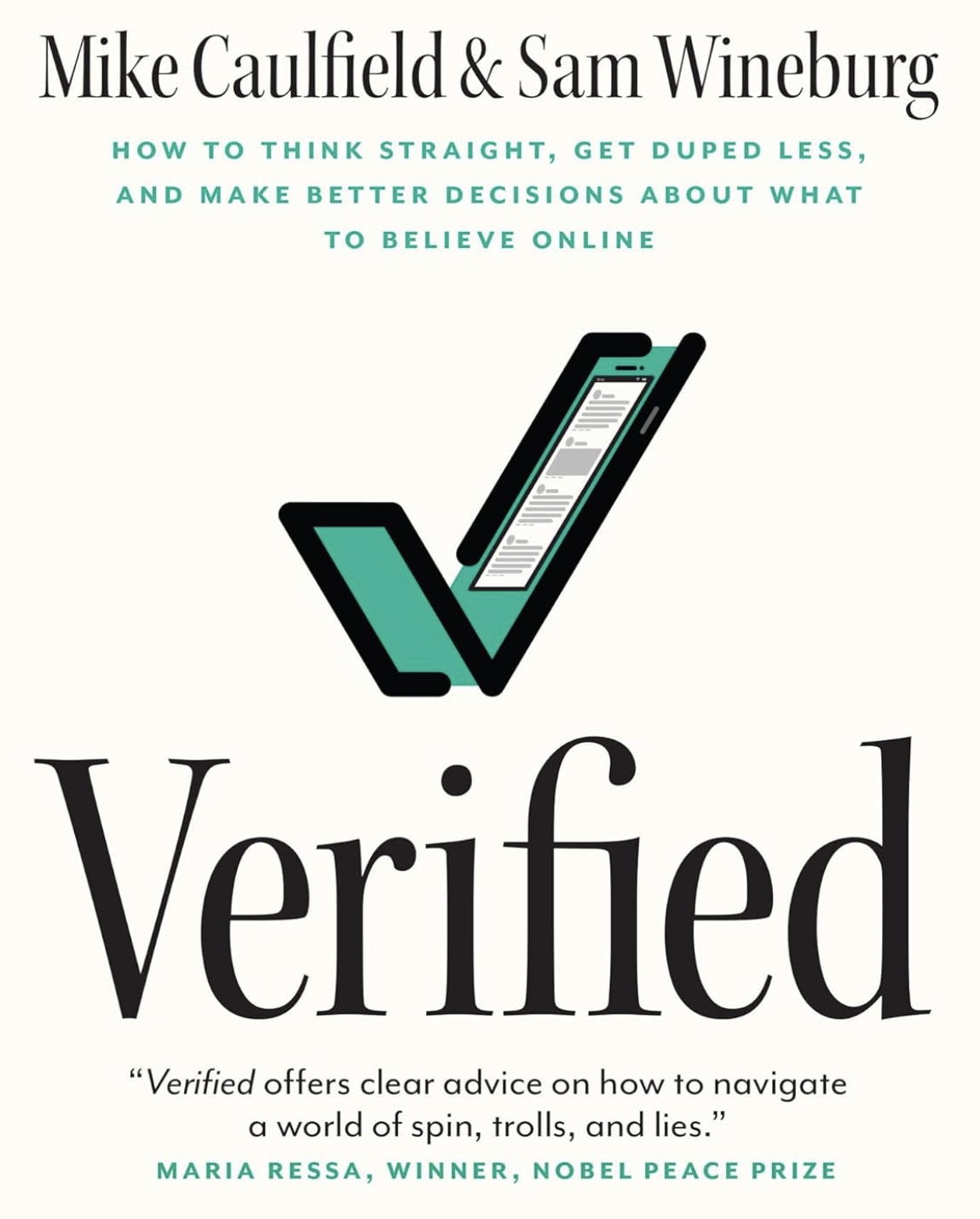
Verified: How to Think Straight, Get Duped Less, and Make Better Decisions About What to Believe Online by Mike Caulfield and Sam Wineburg should be the textbook for any course in high school and college that deals with verifying information on the Internet. Its lessons are easy to absorb and remember, which means that it lives up to its lofty title. Get your copy today.
Introduction
- Prior to the arrival of the Internet, the information we received was already processed by society’s gatekeepers and niche information was seldom available. The Internet was supposed to change all that. While we know that much of what we find on the Internet is false, the skills we inherited from the pre-Internet age are not much use in separating truth from fiction. This well researched book may not protect you from all errors of judgement, but it should make such errors fewer and farther between.
1. Get Quick Context: It Can Take as Little as Thirty Seconds, Seriously!
- Most hoaxes can be quickly disposed of with a simple Internet news search. As you face claims of fact there are three contexts that you should consider. They are the source, the claim itself, and your own level of expertise on the matter. As you reason about a specific piece of content there are certain things to do that involve the acronym SIFT. The first is STOP and ask what you know about the claim. Next INVESTIGATE the source to see if it’s trustworthy. Proceed to FIND other coverage. Finally, if possible, TRACE the claim to its original source. The authors give several examples and warn that just because a claim seems far fetched doesn’t mean that it is.
2. Cheap Signals: Or, How Not to Get Duped
- A cheap signal is one that costs little or nothing and is easy for any con artist to produce. Just because a website has a snazzy look and is well written means nothing. Some legitimate sites may not look totally professional. CRAAP is an acronym for the things you should consider as you evaluate a site. Currency deals with when the content was posted. Relevance deals with how the topic fits with what you are looking for. Authority deals with the credentials of the author. Accuracy means you can verify the information with another source. Purpose deals with the aim of the organization publishing the site.
- Even if a site passes all five CRAAP tests, it still may be a front for an industry promoting its products. It may be a wolf in sheep’s clothing. You should always read the URL of any new site you visit. It can help you spot imposters. The suffixes are important. Dot-com sites are supposed to be commercial and usually try to sell you something, but that is not always the case. (Doug: My site is a dot-com but I’m just providing free resources like this summary.) Dot-orgs are supposed to be non-profit organizations, but beware. Pretty much anyone can get a dot-org site. Also, beware of data bases where anyone can add a record.
3. Google: The Bestie You Thought You Knew
- In 2014 Google started putting descriptive search results at the top of the results page. They called it a featured snippet. Google says that they create the snippets from trusted sites based on the keywords in your search. They are very helpful when things are clear, but may not be when things are vague or complex. The keywords you select are important and you usually need several good ones in a search to get good results. Featured snippets may not provide the best answer.
- Google is not neutral. It tries to give you what you want. Try to avoid searches that broadcast your preferences. Choose neutral search terms that don’t contain words like good or bad. Try searching “are soda taxes a good idea” and “are soda taxes a bad idea” as a example of how this works.
DrDougGreen.com If you like the summary, buy the book





